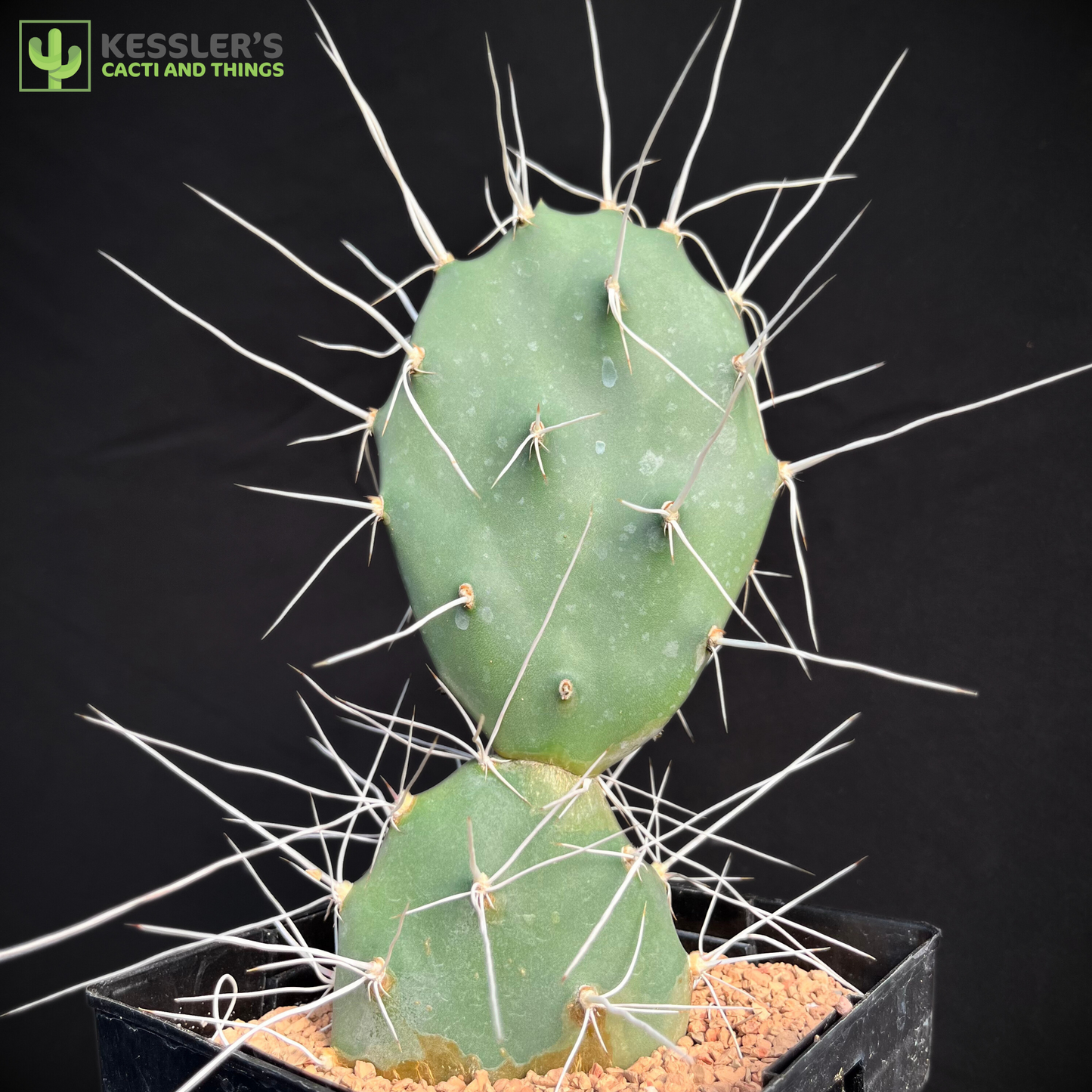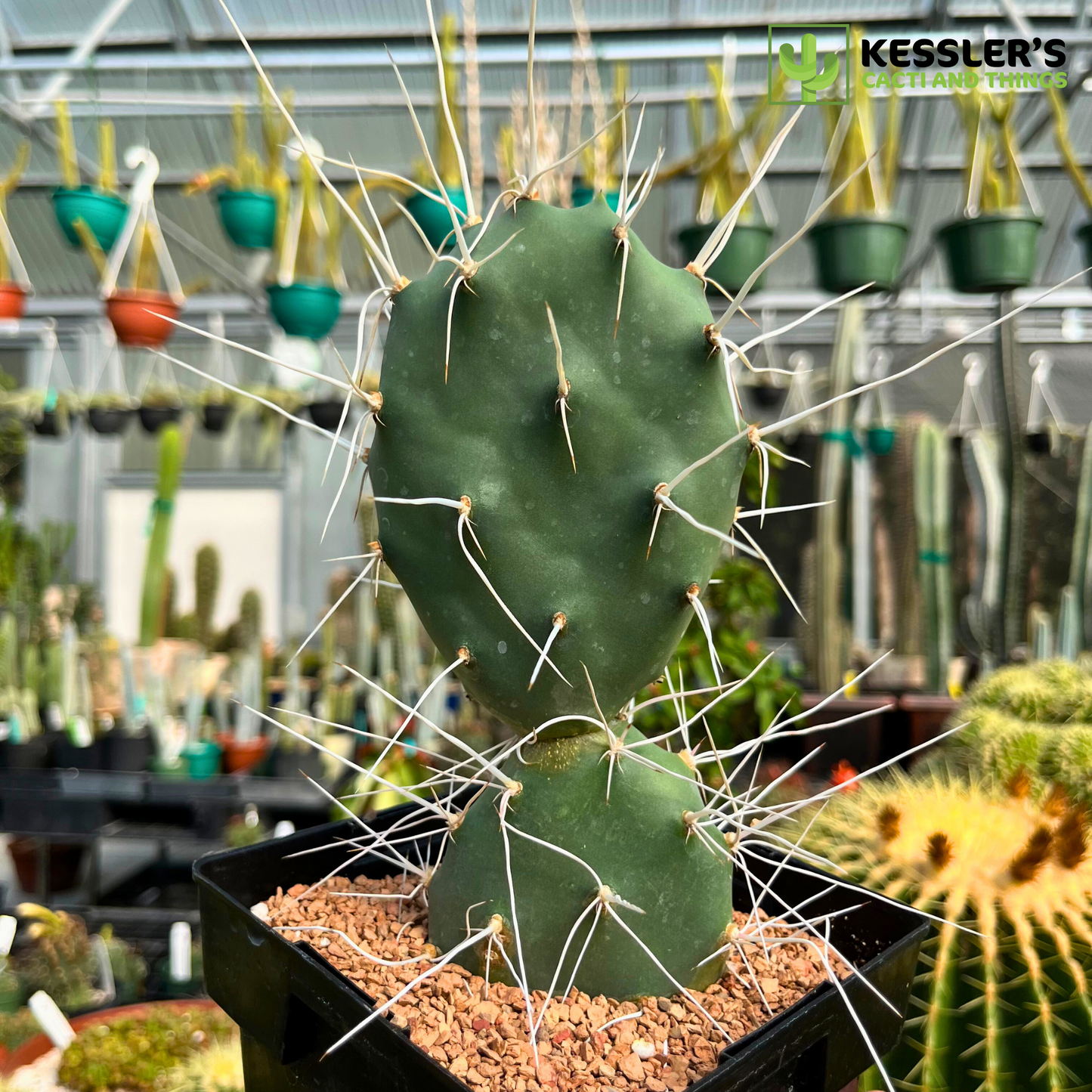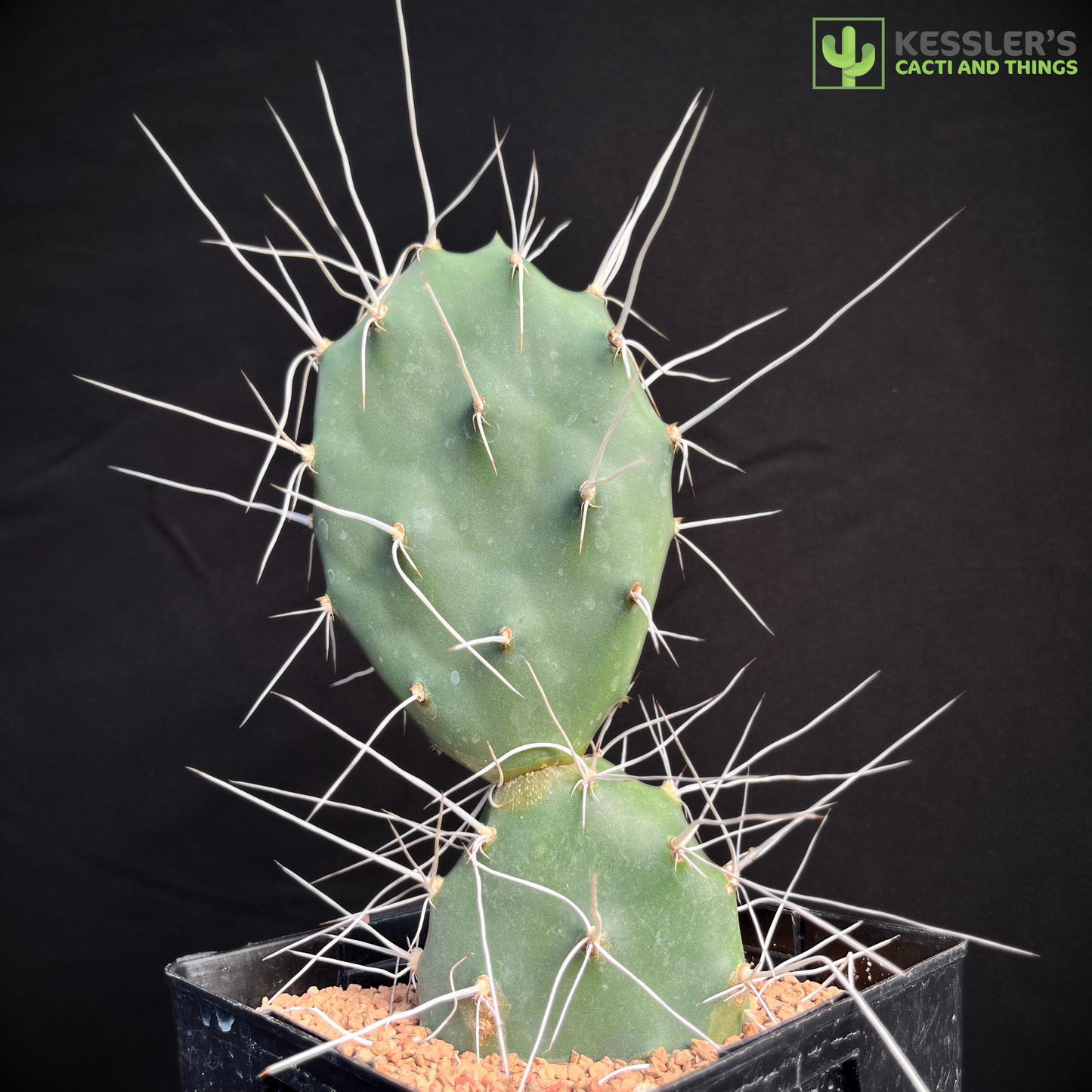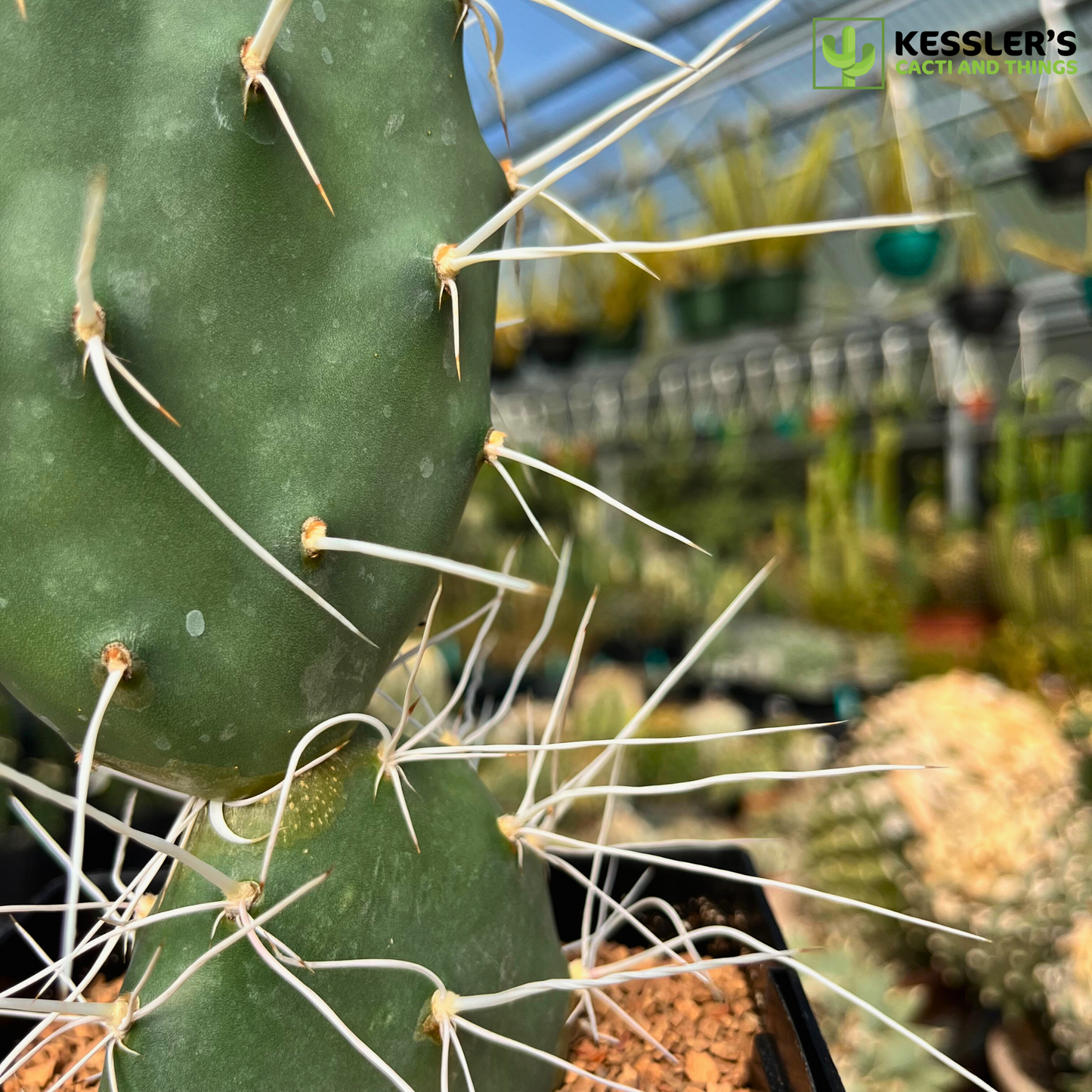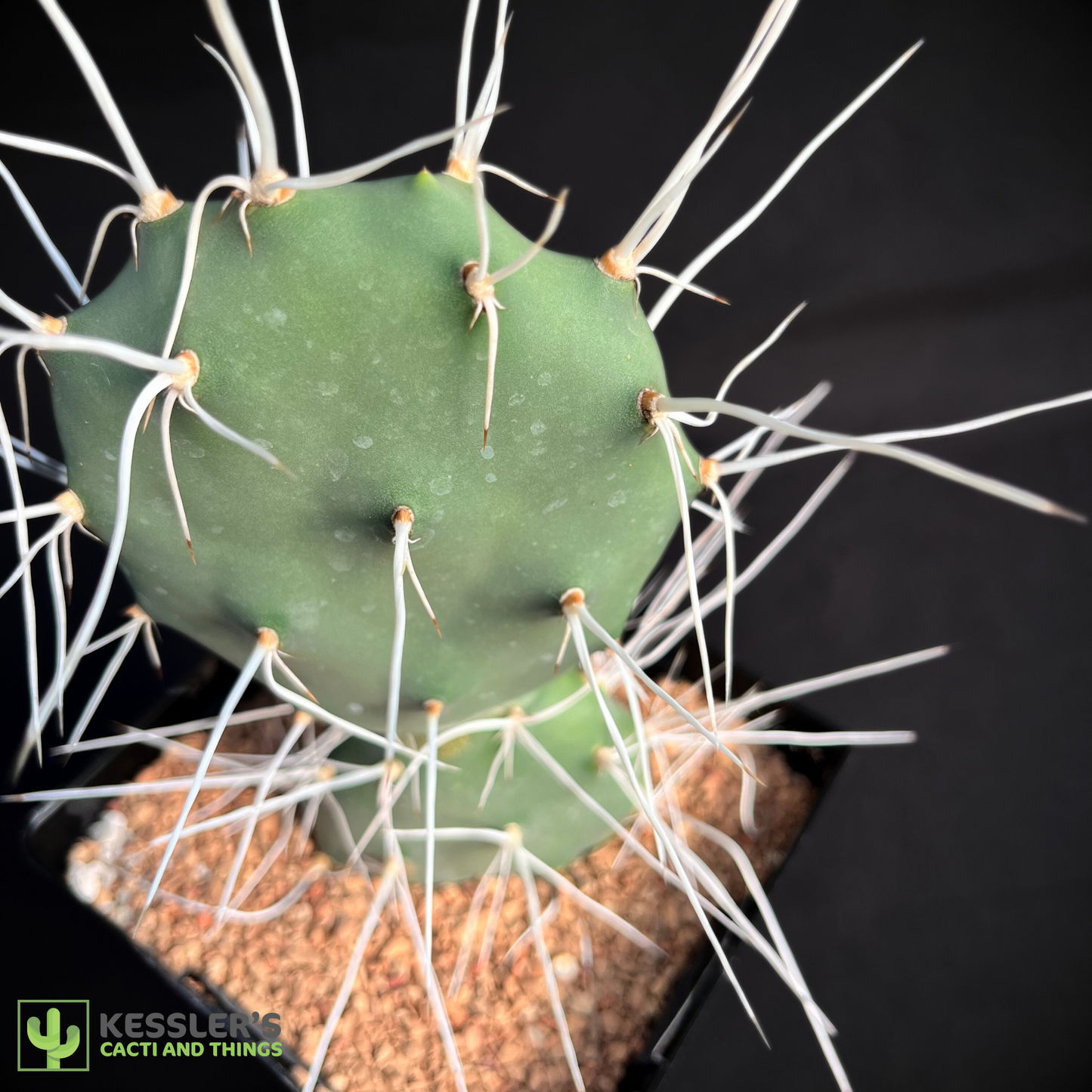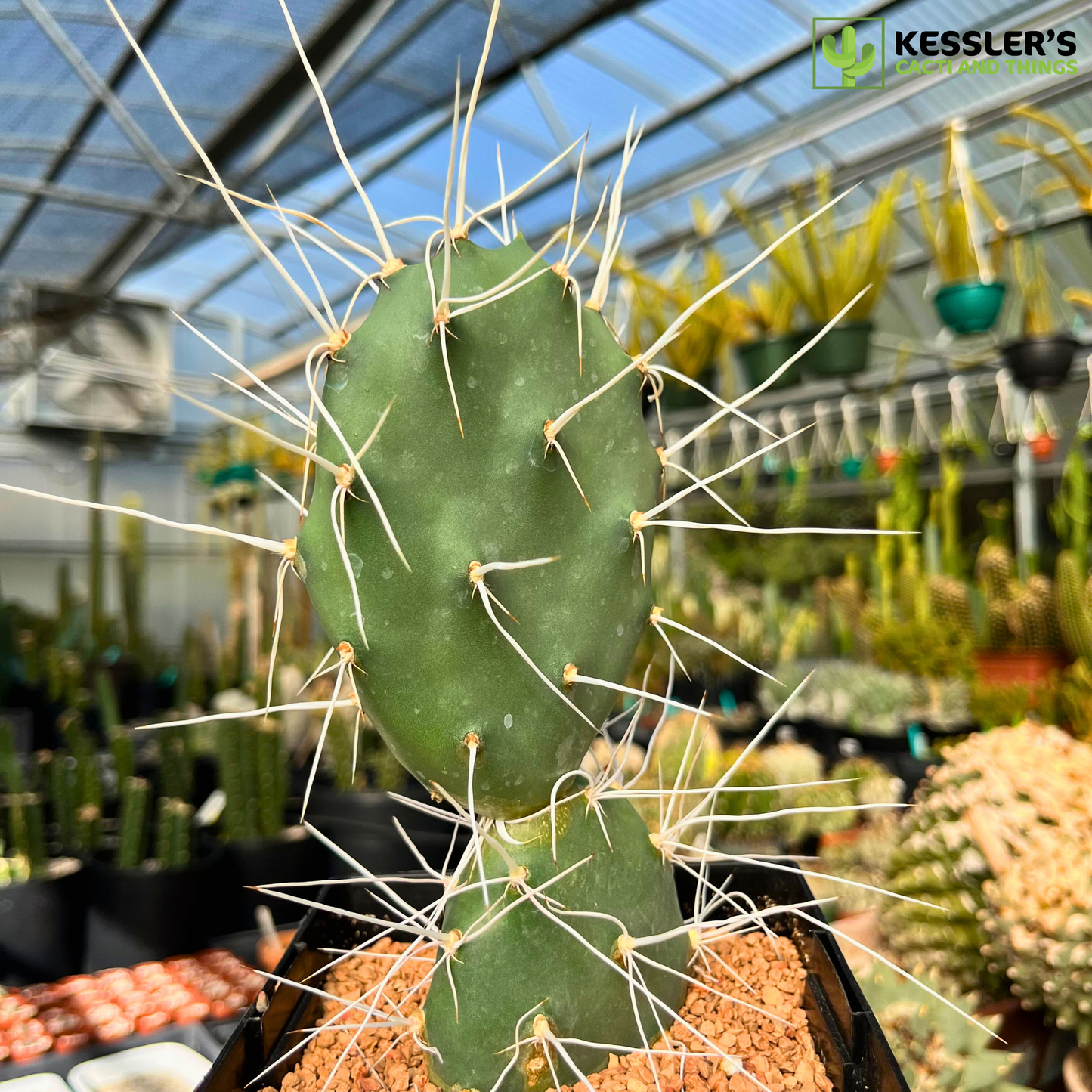Kessler's Cacti & Things
Opuntia Sulphurea (Sulphur Prickly Pear)
Opuntia Sulphurea (Sulphur Prickly Pear)
Couldn't load pickup availability
Opuntia sulphurea
Common Name: Sulphur Prickly Pear
Opuntia sulphurea, also known as the Sulphur Prickly Pear, is a bold and rugged species native to the arid regions of Argentina and Bolivia. This striking cactus features flat, rounded pads with a slightly wrinkled texture and a cool, chalky blue-green color. Its most distinguishing feature? A dense covering of golden-yellow spines that shimmer in the sun and give the plant its “sulphur” nickname.
Compact yet fiercely armored, this species forms low-growing clumps and thrives in harsh, dry conditions. In spring and early summer, it may surprise you with bright yellow flowers that contrast beautifully with its spiny exterior.
☀ Light Requirements
Thrives in full sun. Outdoors, give it the brightest spot available. Indoors, place near a sunny window or under strong grow lights to maintain shape and spine color.
💧 Watering Needs
Water deeply but only when soil is fully dry. This species is extremely drought-tolerant and should be watered less in cooler months. Use a gritty, fast-draining cactus mix.
🌡 Temperature Tolerance
Hardy down to about 20–25°F in dry conditions. Protect from frost if the soil is wet or if cold persists. Add a [Heat Pack] when shipping in winter or to cold zones.
✨ Special Features
• Golden Spines – Bright yellow spines pop against the blue-green pads
• Tough & Hardy – Thrives in intense sun and dry, rocky soils
• Bloom Bonus – Brilliant yellow flowers in spring
Other Common Names:
Sulphur Prickly Pear, Golden-Spined Opuntia
This cactus will ship bare root and will be ready to place directly in a well draining soil mix like our Custom Cactus Mix.
Photos in the listings unless otherwise specified are representative of the plant that will be sent to you.
However, Plants grow differently and each plant may vary slightly in shape, size, growth pattern, etc.
Of course, if you receive a plant that you are dissatisfied with please reach out to us. We want to make it right!
If temperatures where you live will be much lower than 20℉ even heat packs may not work. You may consider waiting until things warm up a bit. We know you love your plants just like we do and we wouldn't want any of them to freeze.
Share
